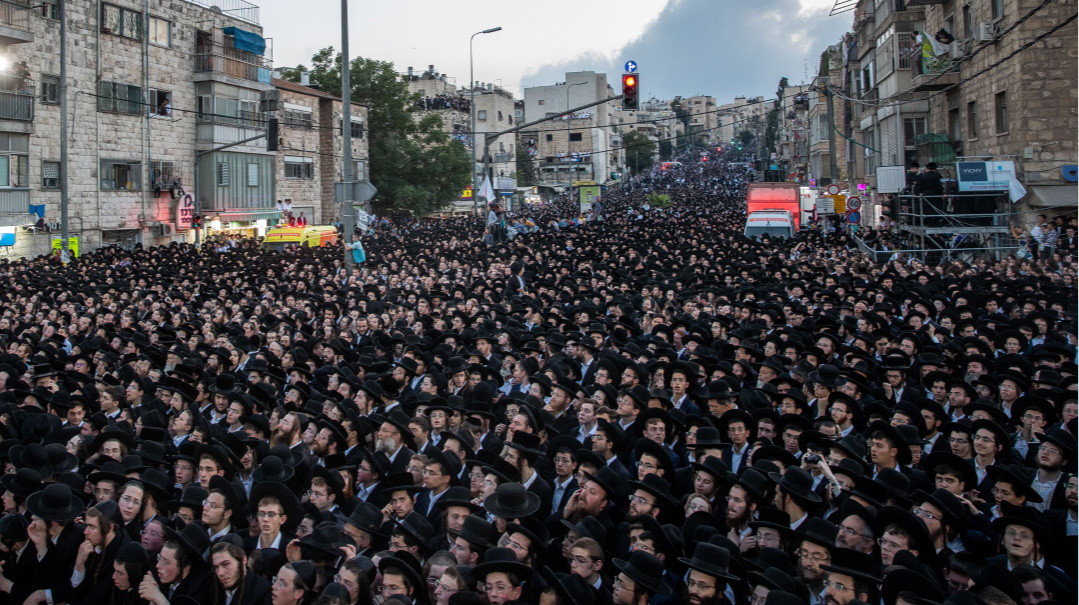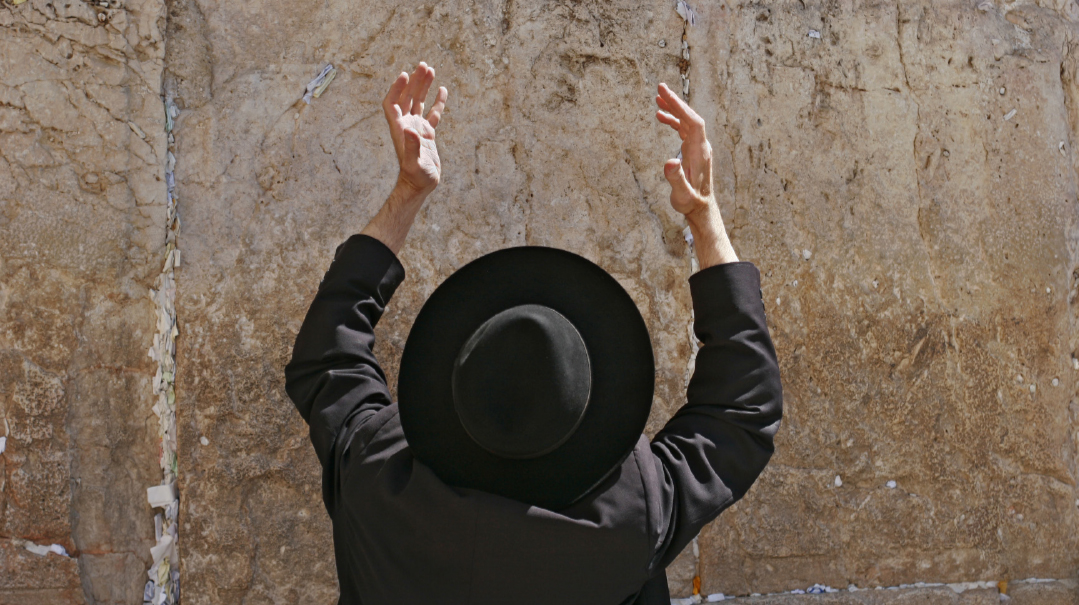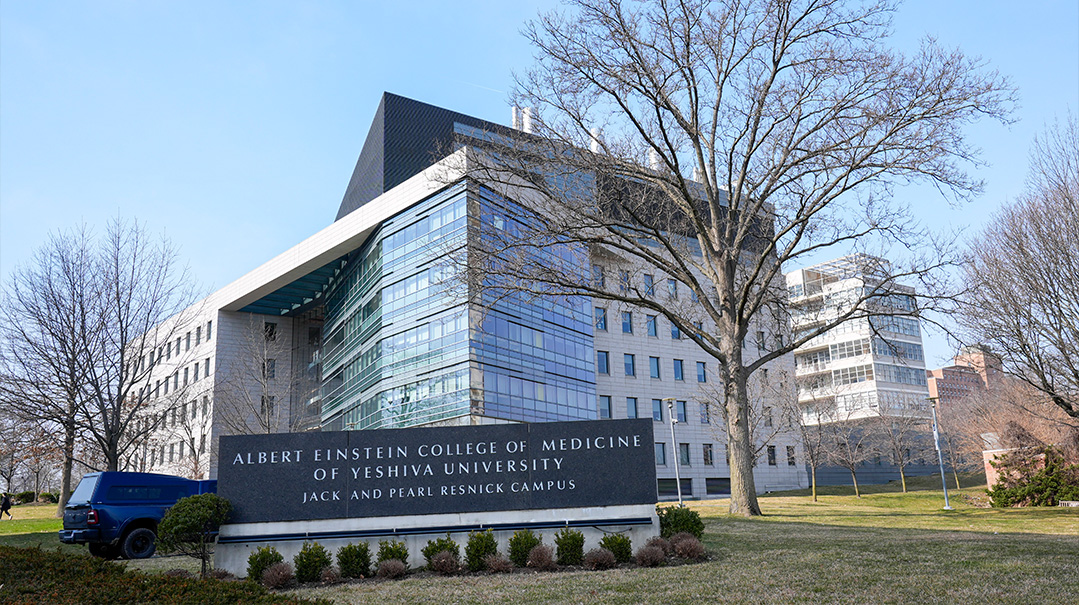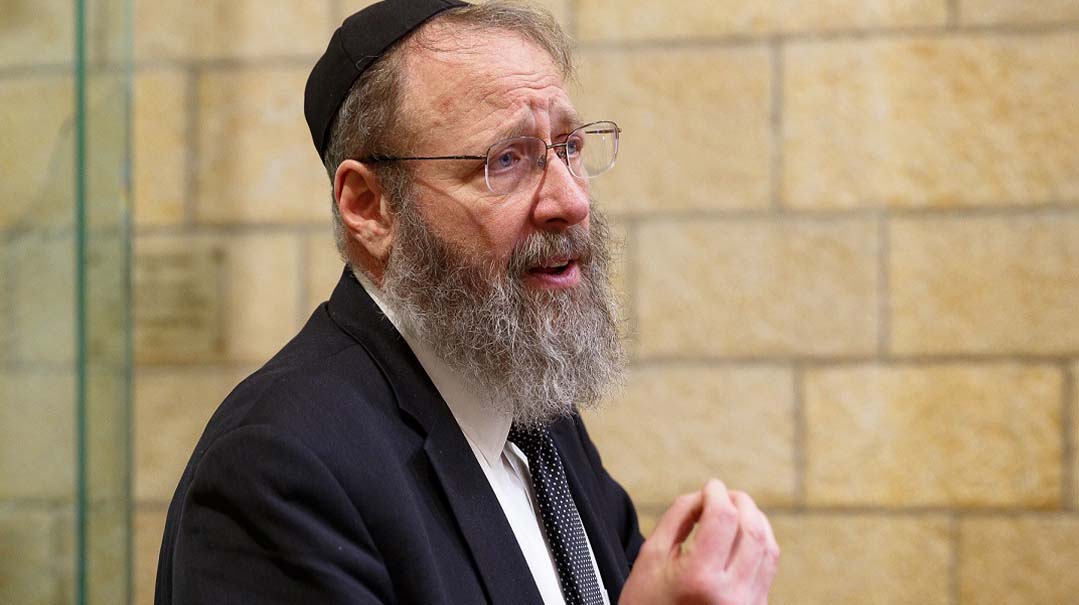Earthquakes, Gog u’Magog, and Geulah
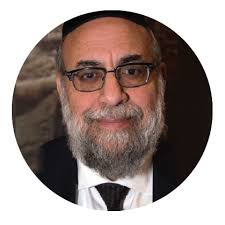
Hashem is sending us so many signs in an effort to get our attention
W
hile the oft-quoted statement that “Yidden are living in very difficult times” could easily describe most of the last 2,000 years of our nation’s history, recent events have been particularly frightening. And these events, which took place in such rapid succession, happened in the midst of Chodesh Adar, the month that is usually associated with simchah, only adding another formidable dimension. It should be obvious that something supernatural is going on, a clear manifestation that “chamas haMelech lo shachacha.”
Several weeks ago, a series of devastating earthquakes took place in Turkey and Syria, killing over 50,000 people and injuring an additional 105,000. We saw the stark images of 550 collapsed buildings, while over 50,000 other structures had to be knocked down preemptively, as they were in imminent danger of toppling.
Years ago, following a different devastating earthquake in Haiti, I referenced in these pages the Chofetz Chaim’s famous letter in which he reacted to the devastating 1923 earthquake in Japan that killed more than 100,000 people. He declared a public taanis and issued a public call to do teshuvah, reiterating that everything that happens in the world happens because of Klal Yisrael, and that the tragedy had been a warning to us.
In another letter dated Av 5687 (1927), the Chofetz Chaim refers to an earthquake that took place in Yerushalayim that year. While no Jews were killed, it left many homeless, starving, and susceptible to the many diseases and illnesses that ravaged the impoverished city.
The Chofetz Chaim wrote in this letter that there had never been an earthquake in Yerushalayim except once in the times of Uziah Melech Yehudah, as a punishment for his stepping into the role set aside for the Kohanim. He concluded that the earthquake was a very frightening sign from Above.
What would the Chofetz Chaim say to us about the devastating earthquakes in Turkey and Syria, which were followed by no less than six aftershocks or minor earthquakes felt in Yerushalayim?
INthat first article following the Haiti earthquake, I quoted the Gemara in Berachos (59a), where Rav Katina explains why earthquakes happen: When HaKadosh Baruch Hu remembers His children, who are suffering at the hands of the nations of the world, He sheds two tears into the great sea and the sound is heard throughout the world.
(The other descriptions referenced in the Gemara are that Hashem kiveyachol claps His Hands, emits a sigh, kicks the sky, or pushes His Feet under the Kisei Hakavod.) All these are various expressions of Hashem’s pain at the plight of His children, which, as we said, is the Talmud Bavli’s explanation of earthquakes.
I deliver a daily Daf Yomi Yerushalmi shiur for the OU’s popular Dial-a-Daf program, and in a keen display of Hashgachah pratis, the earthquakes occurred on the very day the Daf Yomi Yerushalmi on Berachos reached the sugya of earthquakes.
Generally, the Yerushalmi is much more terse, limiting discussion on a topic to a few lines, while the Bavli might expand the discussion through a few pages. Here, though, while Bavli in Berachos offers a few lines about earthquakes, the Yerushalmi (and the accompanying commentaries) discusses them in great detail.
The fundamental difference between the two explanations for the reasons for earthquakes is the following. The Bavli, as we quoted earlier, explains earthquakes as Hashem’s reaction to the suffering of His children. The Yerushalmi, however, explains the phenomenon of earthquakes as a direct result of our sins, specifically the sins of not taking terumos and maasros properly, mishkav zachar, and machlokes.
The Gemara also quotes Eliyahu Hanavi, who says that when Hashem sees people spending their time in entertainment venues, in amphitheaters, or in feasting places, while His house is still destroyed, He wants to destroy the world. In Rav Chaim Kanievsky’s peirush on Yerushalmi, he says he feels that this is the true reason for earthquakes (see he’aros in ArtScroll’s edition).
Yet another opinion brought down in the Yerushalmi is that earthquakes are Hashem’s tool to displace governments and kings, just as He did to Uziah Hamelech.
I found it both fascinating and frightening that we learned this Yerushalmi on the very day that the earthquakes happened. It seems clear that not only are these natural disasters Hashem’s manner of showing His displeasure with us, but that they are a direct result of a particular sin (or sins), which call for us to stop everything and engage in a cheshbon hanefesh, on both the national and individual levels.
The day after the tremors were felt in Yerushalayim, the Gaavad of the Eidah Hachareidis, Rav Moshe Sternbuch, wrote a heartfelt letter to the chareidi public, sharing his fear. He quoted the pasuk in Zechariah that says that before the battle of Gog u’Magog, houses will fall and Yerushalayim itself will be split in half, with one half being saved and the other half sent into exile.
“Who knows,” cried the Gaavad, “in which half he will be at the time?”
Clearly, as the Chofetz Chaim called out to us exactly 100 years ago, it is a time for serious introspection.
Perhaps even more disconcerting than the earthquakes are the many incomprehensible tragedies that have struck our communities, and in such a short time frame. From a plane crash on the way to Cleveland, to men walking home from shul in Los Angeles on Leil Shabbos; a medic killed by a wild elephant in Nepal; a seminary girl just walking back to her school on a quiet street in Yerushalayim; a healthy 32-year-old husband and father passing away on a plane; to an overturned bus in Antwerp, so many people have tragically lost their lives, Rachmana litzlan.
Then there is the wave of terror attacks in Eretz Yisrael, specifically the ones in which two sets of brothers were murdered: Hillel and Yagel Yaniv, and Yaakov Yisrael and Asher Menachem Paley, along with the newly married avreich, Reb Alter Shlomo Lederman, Hashem yikom damam b’karov. Every one of these incidents is heartbreaking. (Although for some reason the tragedy of the Paley brothers has touched me so deeply that I have not been able to remove their photos from the top of my desk as of yet. I’m not sure I ever will.)
Then comes the fake news about our community’s great wealth. All you hear young people discussing today are the half-million-dollar Purim parties in Lakewood; the twenty-million-dollar homes being built in Surfside; or the ever-expanding homes in the Five Towns, Monsey, or Boca Raton.
While these seem to make popular topics of conversation, the struggling segment of our community seems to be under the radar. Is anyone talking about the incredible stress and difficulty that so many families in our communities are going through? Many rabbinic colleagues have shared with me how the requests for help from balabatim, just to be able to provide for their families for Pesach, has increased exponentially.
The Gemara in Sanhedrin (97a) opines that Mashiach will not come until the “perutah has disappeared from the pouch.” Most Rishonim understand this simply to mean that the generation preceding Mashiach will be plagued by poverty to the point that people will not possess even coins of the lowest value like the perutah.
The Rashash, though, who himself was extremely wealthy, has a very different understanding of the Gemara. He explains it to mean that in the generation of Mashiach, people will actually be so wealthy that a perutah, the lowest denomination of currency, will have no value to anyone.
The Chofetz Chaim reconciled these two explanations by saying that in the days before Mashiach, the rich will never have been richer and the poor will never have been poorer. We see this dynamic playing itself out today, and it does not bode well for creating unity among us.
I imagine readers are surely troubled at this review of painful events, wondering what benefit could possibly come from it. But I believe that it’s extremely important. Each event is a call from Hashem to each and every one of us to prepare ourselves, to take notice. Not every call has the loud sound of an earthquake, but every tragedy in Klal Yisrael is an earthquake, nevertheless.
Rav Chaim Kanievsky often spoke about this in the last few years, as did the Chofetz Chaim before him. They both said that as the footsteps of Mashiach come even closer, greater attention must be paid to every call from Hashem, regardless of the volume of the sound. At times it may be just a “kol demamah dakah” (a thin, silent sound) while at times it’s a “shofar gadol yitaka.” In any event, it’s incumbent upon us to make sure we heed every call, despite the pain and discomfort involved in doing so.
Now we come to possibly the most painful call of all, and that is the massive display of sinas chinam taking place in the streets all over Eretz Yisrael during the last few weeks, with the whole world watching.
There have always been political differences among Jews, there has always even been hatred among us, but today we see it on a whole new level. The hostility seems to increase each day.
Just last week, we heard a public statement made on social media about how someone wants “every chareidi Jew hung up by his tefillin straps all the way to Bnei Brak.” While sadly we’ve grown accustomed to this kind of rhetoric from the likes of Lieberman, Lapid, Avram Burg, and Olmert, now we hear it daily from our brothers and sisters in the rank and file of Klal Yisrael, from every segment of society.
I’ve been asked many times recently how current events fit into Chazal’s description in Maseches Sotah of the events that will usher in the Messianic era. In response, I’d like to share something I heard more than 40 years ago from one of the great Torah giants of the previous generation. Its import is so frightening and so devastating that it is no wonder that some Amoraim prayed to be spared from witnessing Chevlei Mashiach.
We understand very little about the meaning of the war of Gog u’Magog that will precede the coming of Mashiach. The sources are very few; there are scattered references throughout the Midrashim written in general terms, with no specifics.
The interpretation I heard comes from a tradition that was passed down through the generations from the Vilna Gaon. Rav Elya Lopian shared it with Rav Aharon Kotler when they met after the war. He explained that the battle of Gog u’Magog will not be a battle among the nations, but a battle of brother versus brother, a battle for the very soul of Eretz Yisrael. It will be a battle between those who believe in Torah and mitzvos and kedushas Eretz Yisrael, and those who do not; a battle for the future of Klal Yisrael as the Am Hanivchar.
Is what we are seeing today in the cities, towns, and streets of Eretz Yisrael the battle that the Vilna Gaon spoke about hundreds of years ago? That, I do not know. What I do know is that Hashem is sending us so many signs in an effort to get our attention.
Earthquakes abound, as does poverty. The banks are falling apart, as is the world itself. We need to be prepared to respond together to the ancient call of “Mi l’Hashem eilai.”
We are too small to know what is in store for us, and we have no navi among us. Is this war in our streets just a phase that will resolve itself soon, or is it something much more? We hope and pray that this month of Nissan will bring the promised redemption, drawing the curtain on all of our questions and all our tzaros.
A few weeks ago, I participated in the Amudim convention together with my old friend Gary Torgow from Detroit, Michigan. I met Gary when he was a junior at Yeshiva University, and we were both NCSY advisors at shabbatonim in the Central East region. He inspired me then and continues to do so today.
At the convention, he shared the following moving story. The father of a friend of his was a soldier in the US Army during World War II, and was among the first people to liberate one of the concentration camps.
Upon entering the camp, he and his fellow soldiers were shocked and horrified to see piles of skeletal corpses of Jewish inmates who had literally starved to death.
Walking alongside the corpses were dozens of emaciated children, more dead than alive, too weak from hunger to even acknowledge their liberators. The army medics quickly instructed the soldiers not to feed the children real food, as the shock to their digestive systems would immediately kill them.
Instead, the soldiers quickly began cooking large pots of soup. In the absence of bowls, they improvised, and use their canteens, helmets, and anything that could hold a few spoons of soup. The children lined up to eat something, many for the first time in months.
Then this Jewish soldier noticed a pile of rags on the floor that was moving a little. When he looked down, he saw a small Jewish child who was so skinny and weak that he couldn’t even stand up. The soldier realized the child only had a few minutes left in This World.
Wanting desperately to do something for him, after a moment or two, he bent down, scooped up the child in his arms, and just began to hug him tightly. While he would never be able to eat or drink again, at least he would leave This World feeling another Jew’s hug.
All of a sudden, this soldier shared with Gary, the children who were standing on line waiting to get their few spoons of soup, after having not eaten for so long, all dropped their bowls and ran over to him so they could also receive a hug.
Ribbono shel Olam, Klal Yisrael has endured so much for so long. The last few weeks have been painful, confusing, and very frightening. Now it is Chodesh Nissan, the month of Geulah — please let us all feel Your embrace.
This article was written l’zecher nishmas Sarah Chaya z”l bas Rav Chaim Aryeh Zev.
(Originally featured in Mishpacha, Issue 955)
Oops! We could not locate your form.

